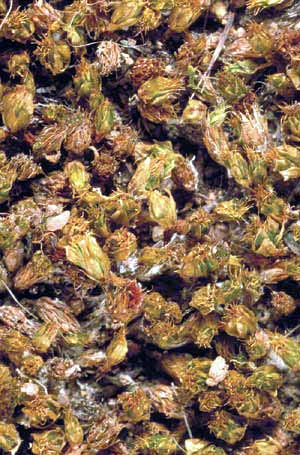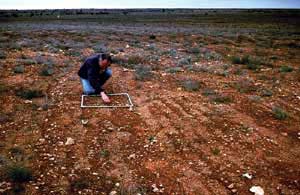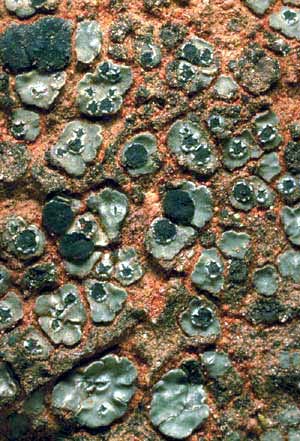SOS - Save Our Soils!
Soil Crusts
In arid areas rain often comes in short but torrential bursts. Raindrops hitting exposed soil will quickly churn up the soil surface, allowing it to be washed away. Extensive coverings, or soil crusts, of lichens and bryophytes over the soil surface lessen the impact of downpours by absorbing the force of the raindrops and reducing the rate of soil erosion.
The presence of a good crust also reduces the risk of wind erosion. With their root-like anchoring structures, many lichens and bryophytes are very effective sand and soil binders. Good carpets of bryophytes and lichens also help protect the underlying soil against extreme heat and help conserve soil moisture.
Lichens and bryophytes can be very effective regulators of water flow and the infiltration of water into soil. A well-developed growth of lichens and bryophytes on the soil means that any water flow is across a rough, obstructive surface. This slows the flow, allowing more time for the water to filter through into the soil below.
A healthy lichen and bryophyte crust also provides shelter for soil invertebrates. Even in exposed areas, dense bryophyte colonies can protect small invertebrates against desiccation. Many of these invertebrates have small tunnels or other excavations in the soil below the crust. Such excavations are natural pathways through which water infiltrates the soil. In addition, water passes into the soil along the root-like anchors that hold the lichens and bryophytes to the soil.
 Xanthoparmelia reptans, like many soil foliose lichens, will not tolerate severe trampling. |
By looking at the lichen and bryophyte species present in an area you can judge the soil quality. For example certain species, such as Xanthoparmelia reptans, indicate well-aerated soil because they cannot survive in heavily trampled areas where overstocking has compacted the soil.
 Small carpets of the flakes, or squamules, of a lichen in the genus Cladonia. |
 Moss beds such as these hold moisture and provide a good germination site for many plant seeds. |
 |
 |
| These photos show the moss Bryum campylothecium, dry and wet. | |
![An Australian Government Initiative [logo]](/images/austgovt_brown_90px.gif)







